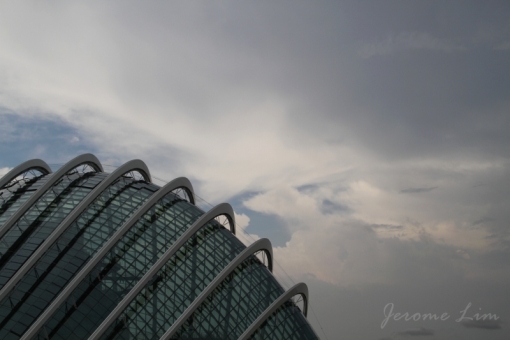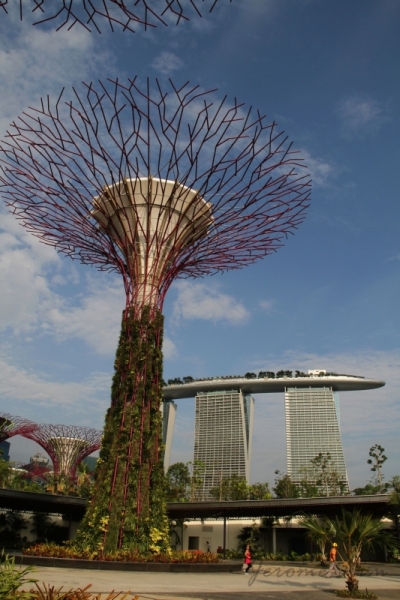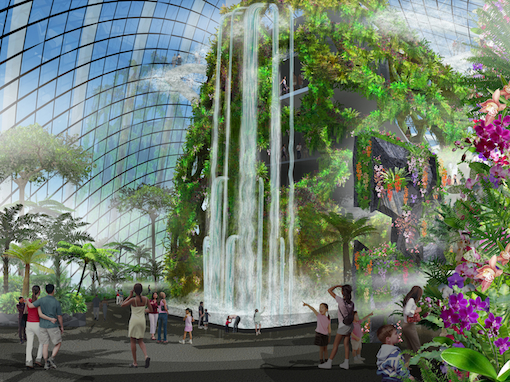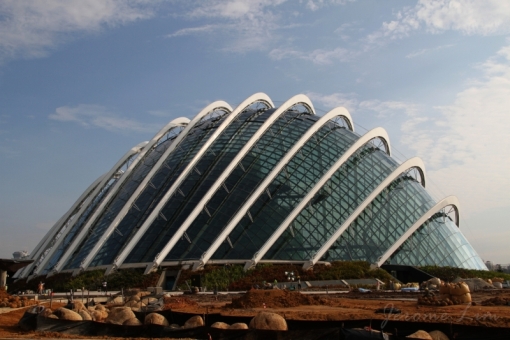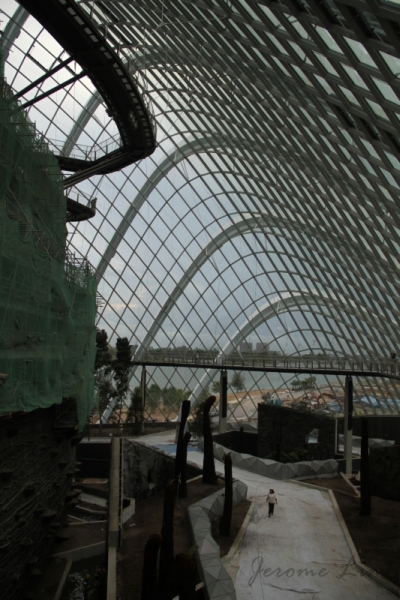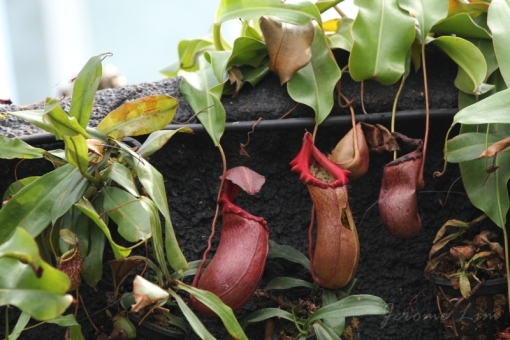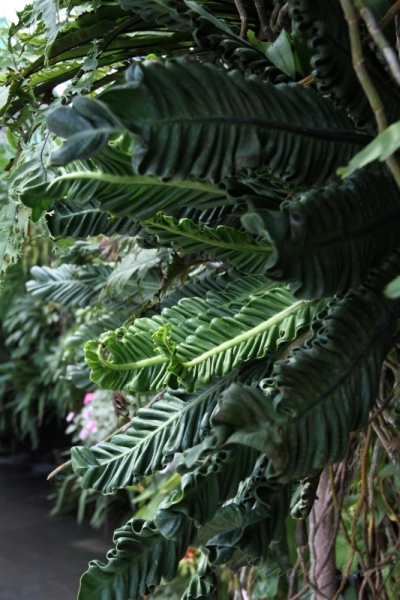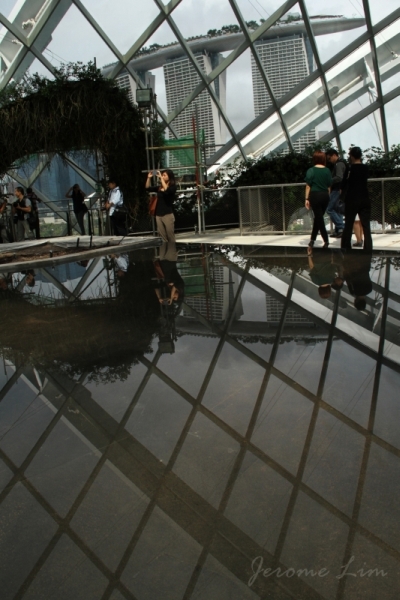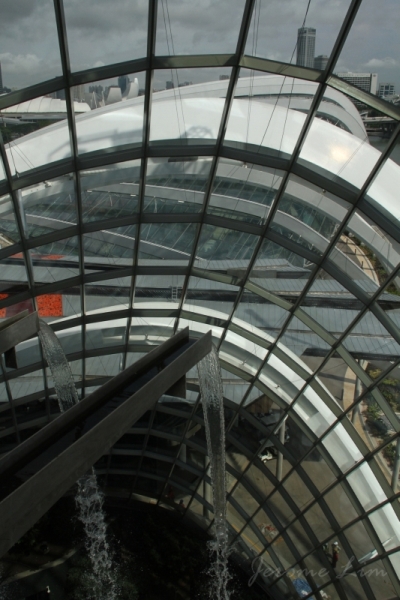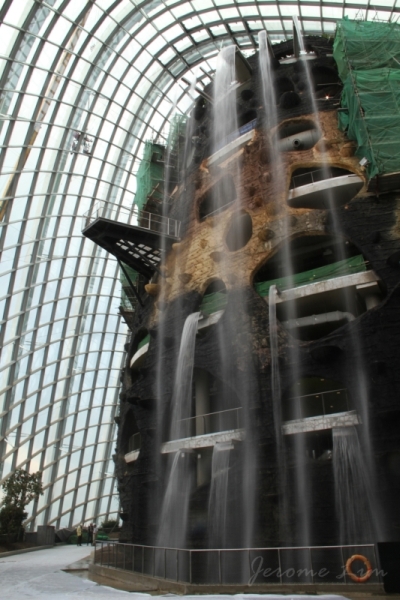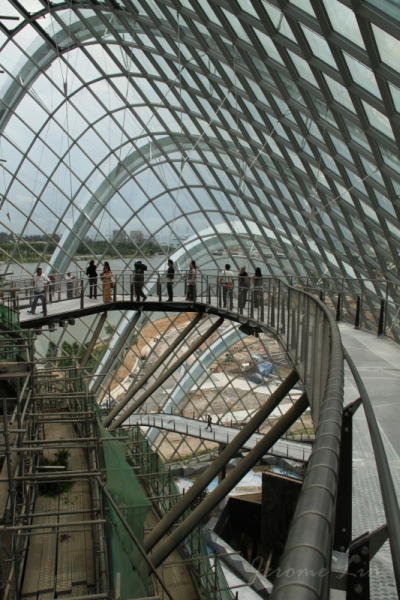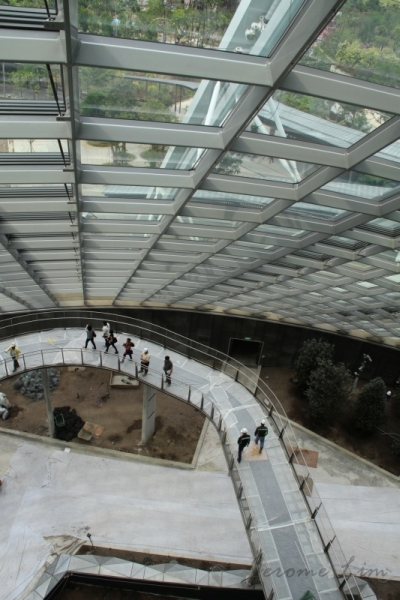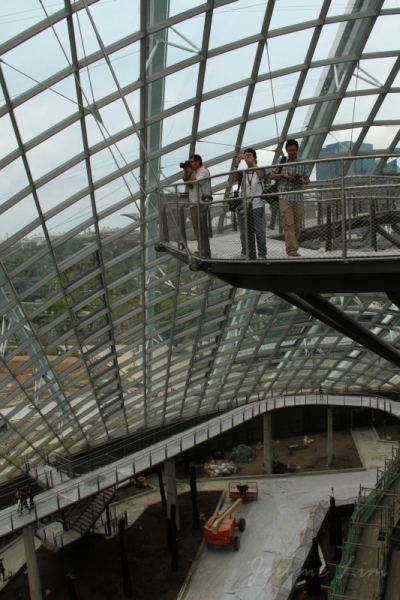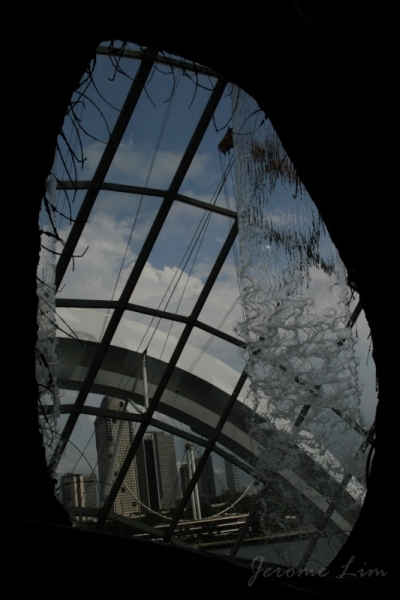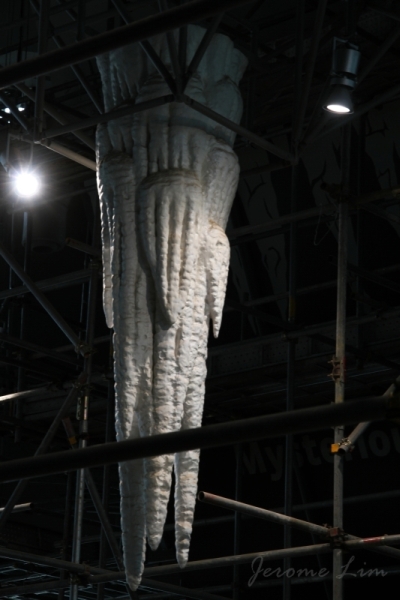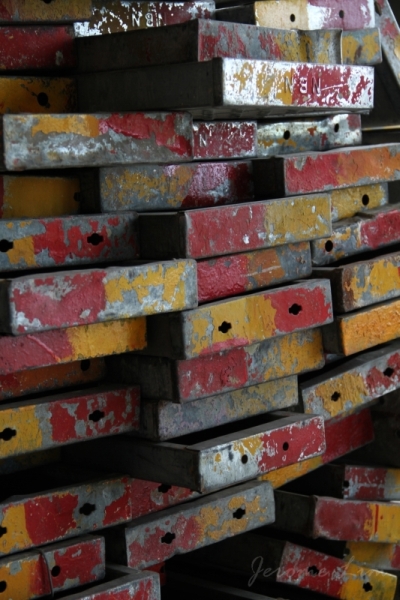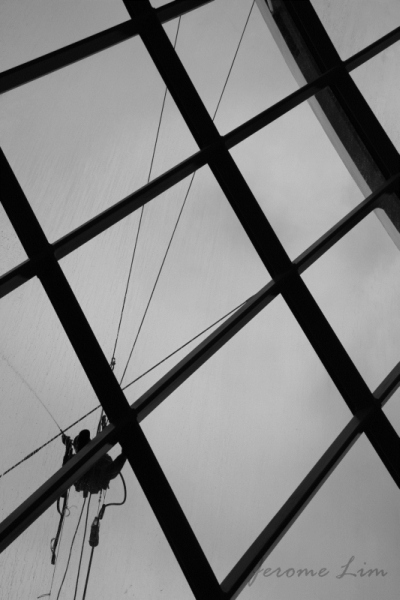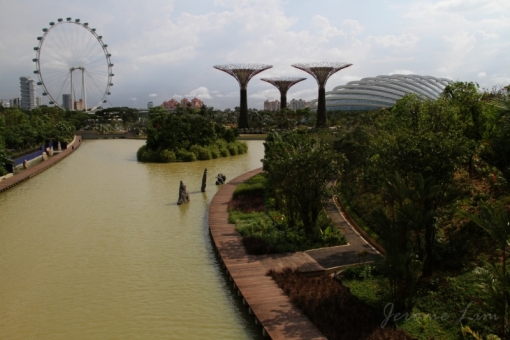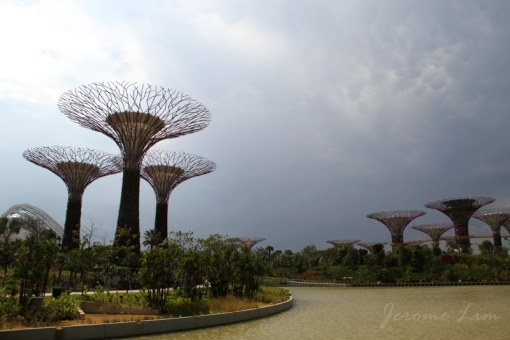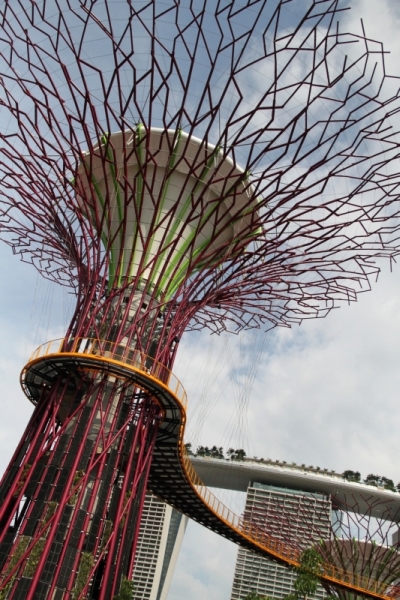Latest updates and a preview of Cloud Forest
Latest updates (from a 3 Apr 2012 Media Preview) on the Gardens by the Bay’s Bay South Gardens opening, opening hours, admission rates and the Cloud Forest can be found in this post: An ascent into the clouds.
It is hard not to notice that massive project that is being undertaken by the National Parks Board (NParks) to create a garden in the Marina Bay area that is part of a greater effort to transform Singapore from a ‘Garden City’ to a ‘City in a Garden’ with the obvious signs from the sprouting of the supertrees that are very visible in the area. Occupying 101 hectares of prime land by the waterside in Singapore’s new downtown, the Gardens by the Bay will, when the first phase is completed in June 2012, offer visitors an opportunity to savour a 54 hectare site at the Bay South, just across the East Coast Parkway from the Marina Bay Integrated Resort, designed by UK-based landscape architecture firm Grant Associates, that will offer Horticultural Themed Gardens, Supertrees and a chance to experience the environments of the cool-dry springtime climates of the Mediterranean and semi-arid sub-tropical regions as well as the cool-moist climate of the Tropical Montane regions such as in Mount Kinabalu in two cooled glass conservatories.

It is hard not to notice the futuristic looking glass domes, and ...

... the sprouting of the Supertrees.
Several of us were able to have a sneak peek at what will be on offer at the Gardens by the Bay, which will feature as one of the venues in the 20th World Orchid Conference (20WOC) World Orchid Show, which Singapore is hosting for the second time this November, yesterday. What we were able to see were the sections which were made ready for the preview – the Heritage Gardens, Dragonfly Lake (and Dragonfly Bridge which connects the strip of land between the ECP to the Gardens), the Supertrees at the Golden and Silver Gardens and one of the cooled Conservatories – the Flower Dome, which features some never seen before and thoroughly fascinating plants from the cool-dry Mediterranean and semi-arid climates around the world.

The foliage of Supertrees, which are tree-like structures 25 to 50 metres in height are vertical gardens with an emphasis on creating a 'wow' factor, seen with a natural tree.
The preview, which was for members of the media, started with a briefing chaired by the CEO of Gardens by the Bay, Dr Kiat W. Tan and the COO, Mr Kenneth Er. We were guided through a plan of the Gardens and the features of each area of the Gardens – which would cost approximately SGD 1 billion to build. The Gardens by the Bay would include the current area of focus, the Bay South area, as well as a 32 hectare site at Bay East which is being designed by another UK firm Gustafson Porter, and Bay Central – which will have a 3 km waterfront promenade that will offer stunning views of the city.

The Dragonfly Lake with the Supertrees at the Silver Garden in the background as seen from the Dragonfly Bridge.
Next it was a preview of the opened parts of the Gardens itself, which we were told, needed a huge effort to get ready for the WOC sneak preview, which will include the Flower Dome, where there is a display of some 14,000 orchids – 150 hybrids and 30 species from around the world which include Taiwan, the Philippines, Thailand, Malaysia, Papua New Guinea, Indonesia and South America.

One of the parts of the Gardens by the Bay opened for the sneak preview was the Flower Dome.
The external areas we had access to did appear to be short of tree cover and shade, and perhaps a little too much concrete for a garden – perhaps as the space was one that was created to blend in with the area and one that required itself to be different from the existing parks and gardens. The fact that the garden was new was another factor and perhaps a more garden-like feel to the garden would come as the trees in the garden matures. The Heritage Gardens was an interesting concept, and allows visitors to move through spaces that are connected with the three major ethnic groups that featured in the development of Singapore as well as with the colonial establishment, with plants and trees which feature in the cultural practices and cooking of the respective ethnic groups.

A sculpture in the Chinese Garden - to represent the numerous Chinese who have left their homeland to seek a better life elsewhere.

A rockery with palms and cycads in the Chinese Garden.
The highlight for me was the visit to the Flower Dome, which covers an area of 1.2 hectares (or 2.2 football fields) under a steel frame supported glass structure which features 3,332 glass panels of 42 varying shapes and sizes and is 45 metres high. What was interesting to learn during the briefing about the Flower Dome – and the smaller neighbouring Cloud Forest (which isn’t completed yet), was of the innovative cooling system which makes use of biomass from horticultural waste generated by NPark’s parks and gardens. An holistic approach is also taken to maintain both temperature and humidity, resulting in an estimated 30% savings in energy consumption compared to conventional methods which also involves:
- Minimising solar heat gain while allowing maximum light through the use of spectrally selective glass and light sensor operated shadings,
- Cooling only of the occupied areas through thermal stratification which ensures cool air settles on the ground and warmer air is vented to the upper levels, and,
- An efficient dehumidification process which de-couples the de-humidification of air from the cooling process using a liquid dessicant to first remove moisture.

Innovative energy efficient methods involving the use of NPark's own biomass waste is used to cool the Conservatories.

Chilled water pipes run below the Flower Dome to cool the ground.
Walking into the cool Flower Dome, one can’t help but be impressed with what has been achieved, as well as with the visual treat provided by the curved glass and steel roof. The Flower Dome is arranged to move the visitor from one cool-dry region to another, from semi-arid regions that represent areas such as the Australian Bush, South Africa, South America, the United States and Madagascar to the springtime climate of the Mediterranean. On display are Baobabs (Bottle Trees), Ghost Trees, Cacti and Succulents, as well as the fire adapted plants of the Australian Garden, the moisture rich plants such as various species of Aloe Vera in the South African Garden, the trees of the Mediterranean region in the Olive Grove such such Fig and Olive Trees, as well as some fascinating trees such as the Monkey Puzzle Tree and the Chilean Wine Palm in the South American Garden.

The Baobabs.

The Succulent Garden.

Cacti in the Succulent Garden.

A Ghost Tree - planted near graveyards in Madagascar and is said to have medicinal uses.

An Aloe plant in the South African Garden.

The leaves and branches of the Monkey Puzzle Tree - so named because a UK based specimen owner remarked that it would 'puzzle a monkey to climb the tree'.

Chilean Wine Palms - natives used to fall the trees to harvest the sap which is used to make an alcoholic beverage.

The highlight for me - 1000 year old olive trees in the Olive Grove. The trees were ones that were affected by development in Spain and transported by refrigerated container to Singapore.

The trunk of an Olive Tree.
The Flower Dome also features a Flower Field, which will feature changing displays of flowers to reflect different seasons, themes and festivals – including its current display of orchids for the WOC. The Flower Dome will also see two F&B outlets, as well as an event space for 800 to 1000 people. The event space will be used to host a gala dinner for the WOC.

The Flower Field in the Flower Dome which will feature changing displays of flowers to reflect different seasons, festivals and themes. It currently displays orchids for the 20th WOC.

Phalaenopsis on display in the Flower Field of the Flower Dome during the WOC.

More Phalaenopsis on display.
Visitors to the WOC would be able to visit the Flower Dome for a sneak preview during a one week period from the 14th to the 20th of November with a ticket to the WOC. Further to this, visitors as well as members of the public without admission tickets to the 20WOC World Orchid Show would also be have a look at the external areas of the Gardens by the Bay which are ready. Information on the 20WOC World Orchid Show, including admission and ticketing, can be found at the 20WOC’s site. Further information on the Gardens by the Bay can be found at their website.










































